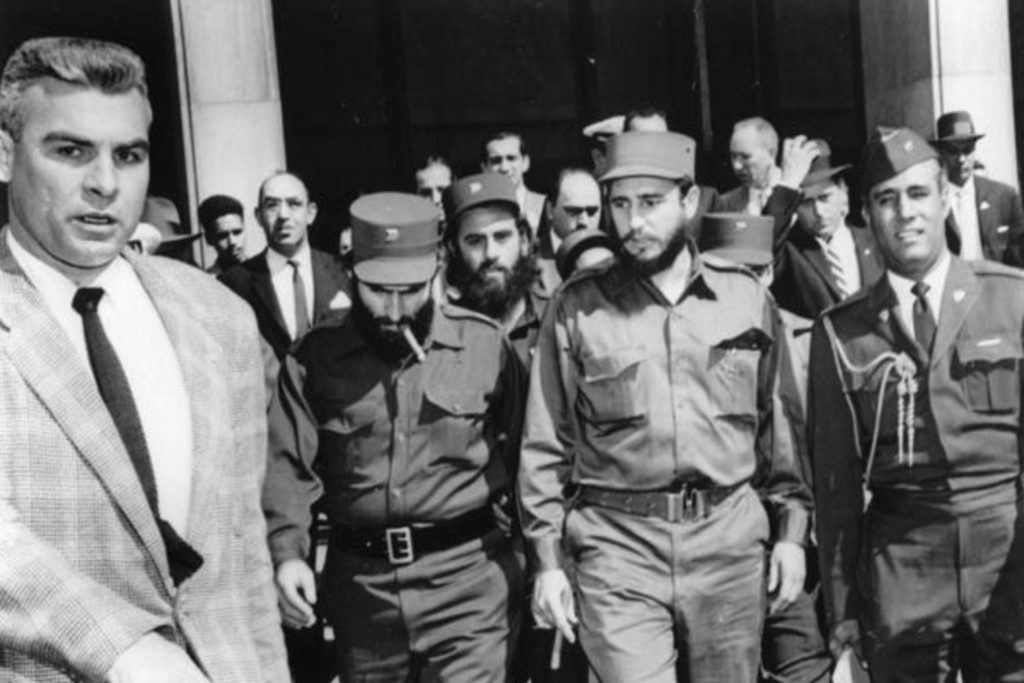On August 13, 1926, Fidel Castro was born as the son of a simple sugarcane farmer. He is best known for rising to power in Cuba through the rebellion that overthrew the Cuban government on December 31, 1958. From this day on, Fidel Castro became the dictator who ruled Cuba for the next 45 years.
Castro’s childhood and beginnings
Fidel was born on the farm owned by his father in Cuba; however, his name was not Fidel Castro. His name was Fidel Ruz. As his parents were not married when Fidel was born, his father did not claim his son until later when he married Fidel’s mother. Only then was Fidel able to be named Fidel Castro instead of Fidel Ruz.
As a student, Fidel was very smart and hard working. He was especially good at sports and loved baseball. For most of his education, he attended boarding schools where he earned the respect of his classmates and teachers.
College years and politics involvement
Castro went to law school at the University of Havana where he was first introduced to the world of politics. Then, he started joining protests against the government under the leadership of Batista at the time. The protesters and Castro were against the corruption and dictatorship of Batista as well as his alliance with the United States.
Castro starts a revolution against Batista
Castro tried to run for elections for the House of Representatives of Cuba in 1952. It did not matter whether he would win or lose because Batista overthrew the government and canceled the elections.
Castro and his colleagues were so frustrated and lost hope in a peaceful change of power in Cuba, so he started a revolution with the help of his brother, Raul. Unfortunately for Castro, the revolution failed and both brothers went to prison for two years.
After he got out of prison, Castro moved to Mexico where he met Che Guevara and started to plan another revolution. In 1956, Guevara and Castro went back to Cuba and started a guerrilla war against the government of Batista. Since Batista was a dictator, the revolution gained people’s sympathy and approval. Three years later, in 1959, the revolution took over Cuba and exiled Batista out of the country.

The savior becomes the new dictator
The people of Cuba supported Castro’s revolution at first and saw him as the savior that would get rid of the evil Batista. Unfortunately for the Cuban people, their hope did not last long. Castro was a communist who believed in the absolute power of the government and the suppression of the people’s voice. This became clear as he ruled Cuba for 45 years without hope for the people that wanted a better tomorrow. Therefore, many people went to prison or were executed just for speaking against Castro’s decisions.
Conflicts with the United States
Since Cuba is so close to the United States, it was a huge problem to have a communist country only 90 miles away from the coast of Florida, which is why the United States tried to overthrow Castro’s government many times. The most well-known attempt was in 1961 in the form of the Bay of Pigs operation. The CIA tried to use Castro’s plans against him and tried to send 1,500 Cuban exiles to start a guerrilla war in hopes that the Cuban people would put an end to Castro’s dictatorship.
The Bay of Pigs invasion failed and resulted in Castro’s decision to allow Soviet nuclear missiles to be set in Cuba, within striking range of the USA. This event was known as the Cuban Missile Crisis. The missile crisis was eventually resolved through negotiations between the U.S. and the Soviet Union as the two countries knew that a nuclear war would end the civilized world as we know it.
Castro’s rule of Cuba ends
Finally, after decades of being the dictator of Cuba, Fidel Castro’s health failed him in 2006. Two years later, in 2008, he turned the leadership and rule of Cuba to his brother and first revolution partner, Raul.
Back to Cold War topics
